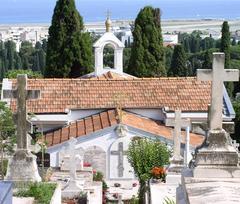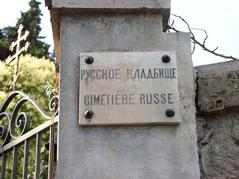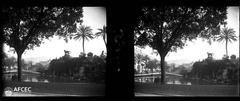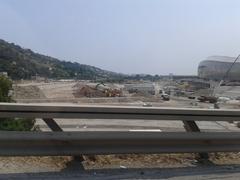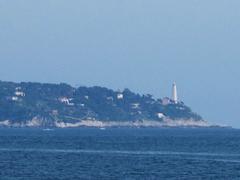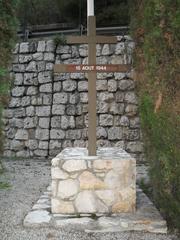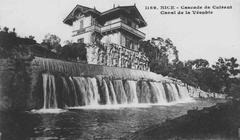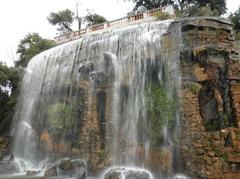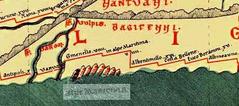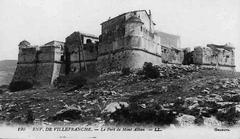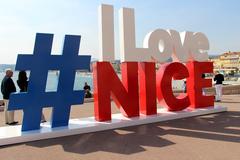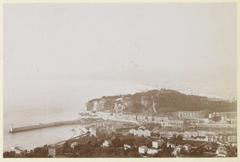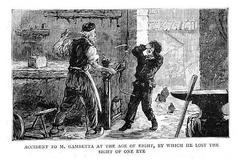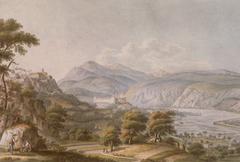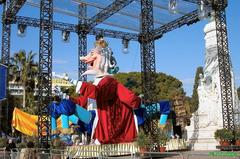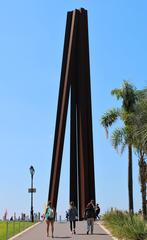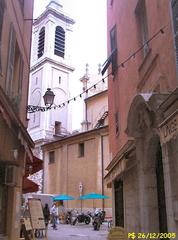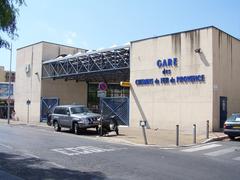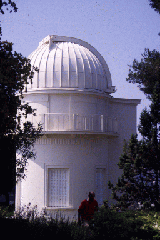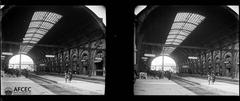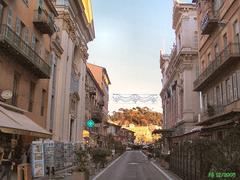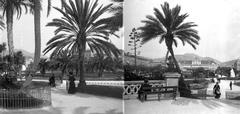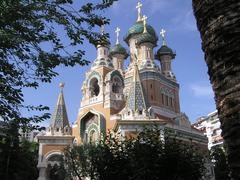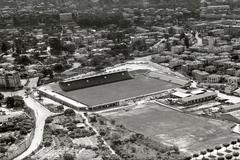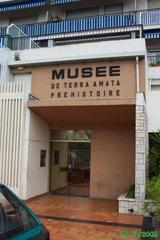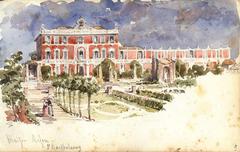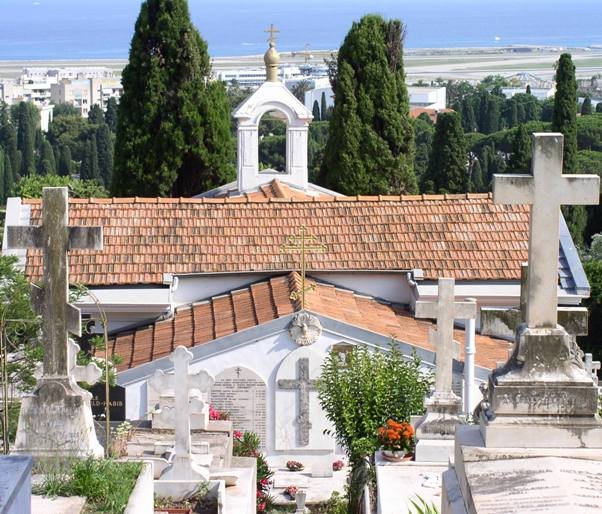
Russian Orthodox Cemetery in Nice: Visiting Hours, Tickets, and Historical Significance
Date: 15/06/2025
Introduction
The Russian Orthodox Cemetery in Nice stands as a poignant testament to the intertwined histories of Russia and France. Established in the 19th century during a wave of Russian aristocratic migration to the French Riviera, the cemetery offers a unique glimpse into the traditions, artistry, and stories of the Russian émigré community. Closely linked to the iconic Saint Nicholas Russian Orthodox Cathedral, the cemetery is both a sacred burial ground and a living chronicle of cultural exchange, religious tolerance, and resilience in exile.
Visitors are greeted by distinctive Orthodox crosses, Cyrillic inscriptions, and mausoleums blending Russian ecclesiastical architecture with French funerary art. The grounds serve as the final resting place for eminent figures including Prince Felix Yusupov, Ivan Bunin, Rudolf Nureyev, and members of the Romanov family, each grave telling a story of artistic brilliance, political upheaval, or the challenges of exile. Recognized as a national historic monument, the cemetery welcomes respectful exploration and commemoration, supported by ongoing preservation efforts and guided by dedicated committees.
For up-to-date visitor information, including hours, accessibility, and nearby attractions, consult resources like Explore Nice Côte d’Azur, Curious Rambler, and the official cemetery website.
Historical Context and Development
The influx of Russian nobility to Nice in the mid-19th century, attracted by the region’s climate and cosmopolitan atmosphere, led to the establishment of significant Russian institutions, including the Russian Orthodox Cemetery. Initially, Russian burials took place in local cemeteries, but the need for a dedicated space led to the opening of the cemetery near what would become the Saint Nicholas Cathedral (Curious Rambler, Touropia). Over time, the cemetery became a symbolic heart of the Russian expatriate community and a repository of its history.
Architectural Features and Layout
Cemetery Grounds
Enclosed by a tall white wall, the cemetery offers an atmosphere of tranquility. Tree-lined avenues and meticulously maintained paths wind past approximately 3,000 graves, with lush landscaping initiated by Princess Vera Mestcherski in the 20th century. The layout is both orderly and intimate, with family plots for noble lineages like the Galitzine, Naryshkin, Obolensky, and Gagarin families.
Chapel of Saint Nicholas
Central to the cemetery is the Chapel of Saint Nicholas, a striking example of Russian Orthodox architecture featuring a central dome and rich iconography. The crypt beneath the chapel is reserved for the primates of the Russian Orthodox archdiocese in Western Europe. Regular liturgies and special commemorative services are held here, deepening the cemetery’s spiritual significance (solosophie.com).
Funerary Art and Symbolism
The cemetery is renowned for its elaborate funerary monuments—Orthodox crosses, family mausoleums, and gravestones inscribed in Cyrillic. Artistry ranges from intricate neoclassical sculptures to simple markers reflecting humility and faith. The visual fusion of Russian and French styles offers unique insights for visitors and historians alike.
Notable Burials and the Russian Émigré Legacy
Many of Russia’s most prominent émigrés found their final resting place in Nice. The cemetery’s “White Russian” legacy is reflected in the graves of:
- Prince Felix Yusupov: Notorious for his role in Rasputin’s assassination.
- Prince Georgy Lvov: Head of Russia’s provisional government post-abdication.
- Ivan Bunin: Nobel Prize-winning author emblematic of the émigré literary tradition.
- Rudolf Nureyev: Legendary ballet dancer with a distinctive mosaic-adorned grave.
- Descendants of the Romanov family: Symbolizing the tragic aftermath of revolution.
In addition, artists, intellectuals, and thousands of ordinary exiles are memorialized here, their gravestones often bearing portraits and personal inscriptions (NPR).
Religious and Cultural Importance
Orthodox Traditions
The cemetery is consecrated ground, with Orthodox burial rites and panikhidas (memorial services) observed especially on feast days. The connection to the nearby Saint Nicholas Cathedral enhances its role as a religious complex where key life events—baptism, marriage, and burial—are celebrated according to Orthodox tradition (Explore Nice Côte d’Azur).
Pilgrimage and Community
For many Russian Orthodox believers, visiting the cemetery is a pilgrimage to honor ancestors and spiritual leaders. Annual commemorations foster a sense of continuity and community among émigrés and their descendants.
Preservation, Ownership, and Political Significance
The cemetery is a symbol of the enduring Russian-French relationship, recognized for its cultural and diplomatic value (solosophie.com). Preservation efforts, led by the Russian Orthodox Graves Maintenance Committee and supported by the city of Nice, safeguard the site’s architectural and historical integrity. Legal proceedings have affirmed the site’s connection to the Russian Federation, underscoring the complexities of heritage, sovereignty, and diaspora rights.
Despite the challenges of natural aging and shifting demographics, the cemetery’s national monument status (since 2001) ensures ongoing protection (NPR).
Visiting Hours, Tickets, and Practical Information
Opening Hours
- General Hours: The cemetery is typically open to visitors on:
- Thursday and Saturday: 09:00–12:00
- Friday and Sunday: 14:00–17:00
- Note: Hours can vary seasonally or during religious holidays. Check the official cemetery website for the latest updates before your visit.
Admission and Donations
- Entry Fee: Free of charge; donations for maintenance are encouraged.
Guided Tours
- Availability: The cemetery does not routinely offer guided tours, but private guides specializing in Russian heritage may be arranged. During peak tourist seasons, special tours and commemorative events may be scheduled. Booking in advance is recommended.
Accessibility
- The cemetery is accessible by public transport (Bus Line 8, “Caucade” stop) and has mostly level paths suitable for wheelchair users, though some areas are uneven.
Visitor Etiquette
- Respectful Conduct: Maintain silence and decorum, especially during religious services.
- Photography: Allowed for personal use, but avoid photographing mourners or ceremonies (Imortuary).
- Dress Code: Modest attire is expected, especially during liturgies.
Religious Services
- A Russian Orthodox liturgy is held every Saturday at 09:30 in the Chapel of Saint Nicholas. Visitors are welcome to attend respectfully.
Nearby Attractions
Enhance your visit by exploring:
- Saint Nicholas Russian Orthodox Cathedral: An architectural masterpiece and spiritual hub for the Russian community.
- Museums: Including the Marc Chagall Museum and Musée international d’Art naïf Anatole Jakovsky.
- Parks: Parc Phoenix and the Jardin botanique de Nice, both offering tranquil green spaces nearby.
Visuals and Interactive Media
- Photos: Explore images of the chapel, notable graves, and traditional Orthodox crosses on the cemetery’s website.
- Virtual Tours: Interactive maps and virtual tours are available to help plan your visit and deepen your understanding of the site’s heritage.
Frequently Asked Questions (FAQ)
Q: What are the exact visiting hours?
A: Typically, Thursday and Saturday: 09:00–12:00; Friday and Sunday: 14:00–17:00. Always verify current hours on the official website.
Q: Is there an entrance fee?
A: No, entry is free; donations are appreciated.
Q: Are guided tours available?
A: Not routinely, but private guides may be arranged. Check for special events.
Q: Is the cemetery accessible for wheelchairs?
A: Main paths are generally accessible, though some areas may require assistance.
Q: Can I attend a religious service?
A: Yes, liturgy is held Saturdays at 09:30 in the chapel.
Q: Is photography permitted?
A: Yes, when done respectfully and away from mourners or ceremonies.
Summary & Recommendations
The Russian Orthodox Cemetery in Nice is a rare historical and cultural landmark—an evocative site where faith, memory, and artistry converge. From the grandeur of imperial mausoleums to the humble graves of exiles, the cemetery tells the story of displacement, resilience, and intercultural dialogue. Supported by ongoing preservation and open to all, it offers not only a window into the Russian diaspora but also a peaceful space for reflection.
Visitors are encouraged to plan ahead, check current visiting hours, and consider attending a liturgy or guided tour for deeper insight. Its proximity to the Saint Nicholas Cathedral and other heritage sites makes it an essential stop on any cultural itinerary in Nice.
For further information, download the Audiala app, explore related articles, and follow updates on the official cemetery website.
References
- Curious Rambler, Three Russian Tsarinas Leave Their Mark on Nice, France
- Touropia, Tourist Attractions in Nice
- Explore Nice Côte d’Azur, Nice: A Diverse Religious Heritage
- solosophie.com, Russian Orthodox Cathedral in Nice
- NPR, Russian Orthodox Cemetery France Putin Ukraine War
- Cimetière russe de Caucade Official Website
- Imortuary, Cemetery Etiquette: How to be Respectful When Touring a Cemetery
